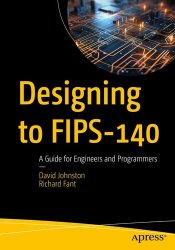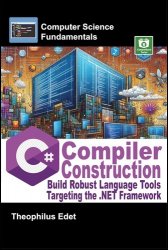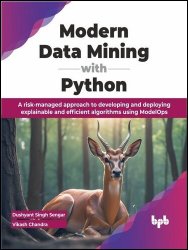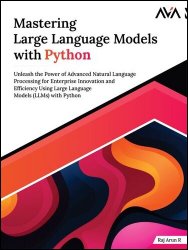 Название: Designing to FIPS-140: A Guide for Engineers and Programmers
Название: Designing to FIPS-140: A Guide for Engineers and ProgrammersАвтор: David Johnston, Richard Fant
Издательство: Apress
Год: 2024
Страниц: 224
Язык: английский
Формат: pdf, epub
Размер: 10.1 MB
This book provides detailed and practical information for practitioners to understand why they should choose certification. It covers the pros and cons, and shows how to design to comply with the specifications (FIPS-140, SP800 documents, and related international specs such as AIS31, GM/T-0005-2021, etc.). It also covers how to perform compliance testing. By the end of the book, you will know how to interact with accredited certification labs and with related industry forums (CMUF, ICMC). In short, the book covers everything you need to know to make sound designs.
There is a process for FIPS-140 (Federal Information Processing Standard) certification for cryptographic products sold to the US government. And there are parallel certifications in other countries, resulting in a non-trivial and complex process. A large market of companies has grown to help companies navigate the FIPS-140 certification process. And there are accredited certification labs you must contract toget the certification.
Although this was once a fairly niche topic, it is no longer so. Other industries―banking, military, healthcare, air travel, and more―have adopted FIPS certification for cryptographic products. The demand for these services has grown exponentially. Still, the available skills pool has not grown. Many people are working on products with zero usable information on what to do to meet these standards and achieve certification or even understand if such certification applies to their products.
As long as cryptography has been around, there have been attackers trying to read encrypted messages. Egyptians used simple symbol substitution around 1900 BCE to obscure and modify hieroglyphic text. Approximately 2000 years later, Julius Caesar was using a substitution cipher to pass encrypted messages on the battlefield. Jump forward another 2000 years, and the Germans are using Enigma technology in their war effort. Now, less than 100 years later, quantum computers are allowing attackers an unprecedented decryption ability to read previously secure cryptographic messages.
The competence of modern-day cryptographic attackers can range from a single malicious high-school student to a nation-state bent on world domination and, of course, everything in between. Similarly, the tools of the attacker vary from razor blades used for delidding a CPU to a focused ion beam (FIB) used with an electron microscope to a quantum computer capable of brute-force calculations, allowing it to decipher in days a message that would take a supercomputer more time than the lifespan of the universe to solve.
Historically, the designers of cryptographic algorithms would keep secret exactly how their algorithm worked in encrypting messages. The thinking was that if an attacker didn’t know how a message was encrypted, it would be considerably more difficult for unintended recipients to decrypt it. That mindset has changed over the years. A common strategy now is to publicly announce new cryptographic algorithm designs and invite the public to try and break them, for example, new cryptographic algorithm designs are publicly solicited, peer reviewed, openly tested, and possibly adopted after several rounds of evaluation. In fact, the US government has followed this strategy for many post-quantum cryptographically secure (PQC) algorithms before adopting those PQC designs as part of an evolving standard.
What You Will Learn:
What is FIPS-140? What is the SP800 standard?
What is certification? What does it look like? What is it suitable for?
What is NIST? What does it do?
What do accredited certification labs do?
What do certification consultants do?
Where and when is certification required?
What do FIPS-140 modules look like?
What are the sub-components of FIPS-140 modules (RNGs, PUFs, crypto functions)? How does certification work for them?
What are the physical primitives (RNGs, PUFs, key stores) and how do you handle the additional complexity of certifying them under FIPS?
What are the compliance algorithms (AES, SP800-90 algos, SHA, ECDSA, key agreement, etc.)?
How do you design for certification (BIST, startup tests, secure boundaries, test access, zeroization, etc.)?
How do you get CAVP certificates (cert houses, ACVTs)?
How do you get CMVP certifications (cert houses, required documents, design information, security policy, etc.)?
Who This Book Is For:
Hardware and software engineers or managers of engineering programs that include any form of cryptographic functionality, including silicon vendors, library vendors, OS vendors, and system integrators.
Скачать Designing to FIPS-140: A Guide for Engineers and Programmers
[related-news] [/related-news]
Комментарии 0
Комментариев пока нет. Стань первым!















